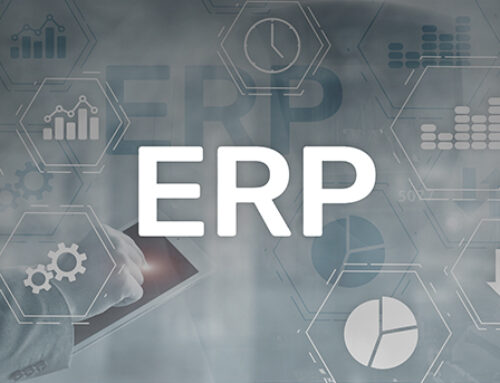Today’s rapidly advancing competitive landscape requires businesses to stay up-to-date with current trends, cater to evolving consumer needs, and set up effective internal processes in order to remain relevant. Implementing DevOps and Agile operations can help organizations do just; it not only elevates the overall software development and operations process but also helps cater to the demands of the end consumer. In fact, companies that employ a combination of these methods see a 60% increase in revenue — 2.4x more than those that don’t.
But before we dive in to understand how these two can be combined, let’s lay down the basics-
Understanding DevOps and Agile
While both DevOps and Agile are modern software development practices focused on the same goal — accelerating deliveries while maintaining high customer value — they take different approaches toward achieving it.
DevOps
- DevOps is a practice that delivers continuous value by bringing together people, processes, and technologies, and speeding up software development processes.
- It focuses on planning, development, building, testing, delivery, and continuous operations and monitoring in order to accelerate the launch, release, or updation of a product effectively.
- The uniqueness of DevOps lies in that it brings together people from different teams — including development, IT operations, quality engineering, and security — to work in tandem with each other.
Agile
- Agile, on the other hand, is a development methodology designed to drive releases centered around the evolving needs of the stakeholders rather than rigid, structured plans.
- The approach followed includes adaptive planning, development, delivery, continuous improvement, and flexible responses to changes in requirements, capacity, or the understanding of the issues that need to be solved.
- It focuses on discerning requirements and building working prototypes by bridging the gap between the development team and the end user.
DevOps vs Agile
As seen above, both DevOps and Agile have different approaches, involve different groups of people, and structure software production differently. To elaborate-
| DevOps | Agile |
| Drives continuous delivery by bringing together people, processes, and technology. | Creates working prototypes amidst the evolving needs and requirements of end-users. |
| Involves collaboration between the Development (Dev) and Operations (Ops) teams. |
Is specific to the development team, its productivity, and its progress toward completing a project. |
| DevOps focuses on maximizing efficiency, identifying programmable processes, and increasing automation to streamline software delivery. | Agile centers around adaptability and keeping up with the customers’ needs and expectations. |
| It’s geared towards continuous integration, delivery, and deployment. | It promotes teamwork, self-organization, and accountability. |
It’s important to note that, even though both practices differ, they are not mutually exclusive. Both can be used together to accelerate deliveries and provide customer value.
Why combine DevOps and Agile?
The best way to look at the relationship between DevOps and Agile is not as two intersecting ideas, but as one enhancing the capabilities of the other. This results in the creation of effective practices that help improve the flow of work, as well as its speed and quality.
Here are seven more reasons why combining the capabilities of DevOps and Agile proves profitable to businesses-
- Teams can work together more effectively.
- A continuous integration/delivery pipeline is implemented.
- Process releases become faster and more simplified.
- Every release provides more value with fewer risks.
- Increased customer satisfaction, driven by high-quality products.
How to integrate DevOps and Agile
Implementing a DevOps + Agile methodology in your organization will require careful consideration, planning, and stagewise implementation.
Keep these five steps in mind before getting started-
- Evaluate the current state of your development processes – Understanding the current state of your organization will help you draw effective roadmaps toward digital transformation. Start by considering the status of cultural readiness, leadership potential, previous implementation experience, and the IT management process.
- Adopt a small and straightforward strategy – Begin slow; work on an MVP that adds value to the organization, customers, and employees using quick processes and associated technologies.
- Discover and evaluate challenges individually – Address each issue that arises, no matter how big or small, using the best-suited principles and practices.
- Lead across cultures – Employ leaders to help streamline the DevOps + Agile implementation, allowing them to facilitate and encourage employees to understand and get accustomed to new changes.
- Optimize continuously – Continuously optimize software, processes, and tools to be prepared for new uncertainties and stay ahead of the competition.
Points to keep in mind
There are several challenges your organization might face while integrating DevOps with Agile. Here are some pointers on how to combat them-
- Streamline team workflow – It’s important to ensure that all the teams — development, IT operations, quality engineering, and security — have a deep understanding of the process.
- Define the lifecycle – Implement DevOps principles at the beginning of the project for increased consistency and faster delivery and reduced errors and costs.
- Plan effective sprints – Align DevOps and Agile sprints by ensuring the presence of all stakeholders at the planning stage and including the DevOps team in backlog planning, daily discussions, and sprint reviews.
- Ensure quality processes and delivery – Perform regular quality checks to better streamline your Agile and DevOps frameworks and processes.
- Leveraging the right tools – Use the right configuration tools for the successful adoption of Agile and DevOps into software development.
- Automate what you can – Identify and set up automated processes to reduce error and streamline development and delivery.
- Measurement and analysis -Track the progress and performance of workflows in order to execute multiple, successful delivery cycles by providing customer value at increased speeds.
How can Victrix help?
Integrating DevOps and Agile can be a swift and productive process if implemented with thorough understanding, planning, and technical know-how.
At Victrix, we utilize decades of experience and domain expertise to deliver quality technology solutions to our clients.
Drop us a quick message to discuss your thoughts on implementing DevOps and Agile at your organization, and consider how we can help.





Leave A Comment